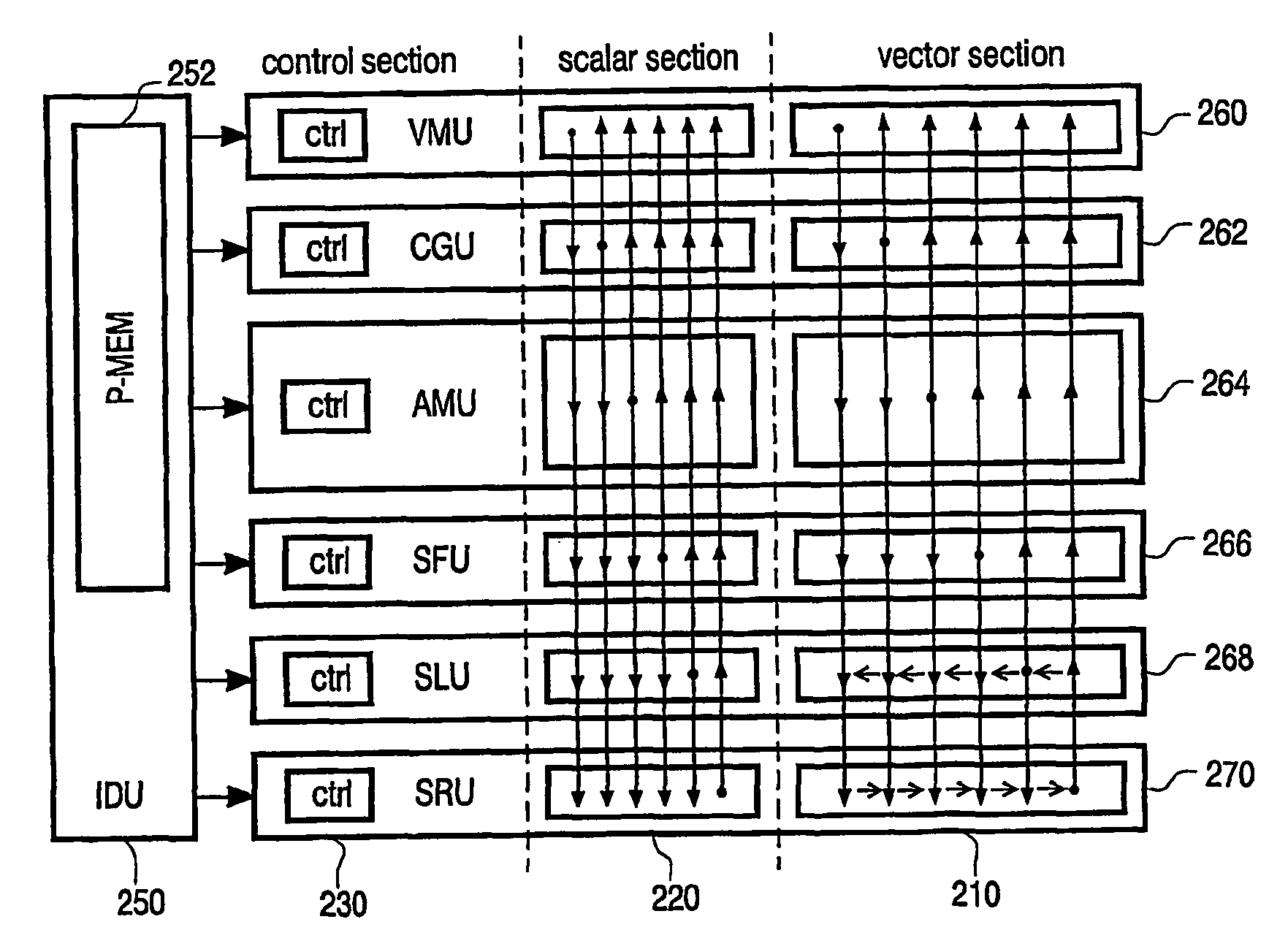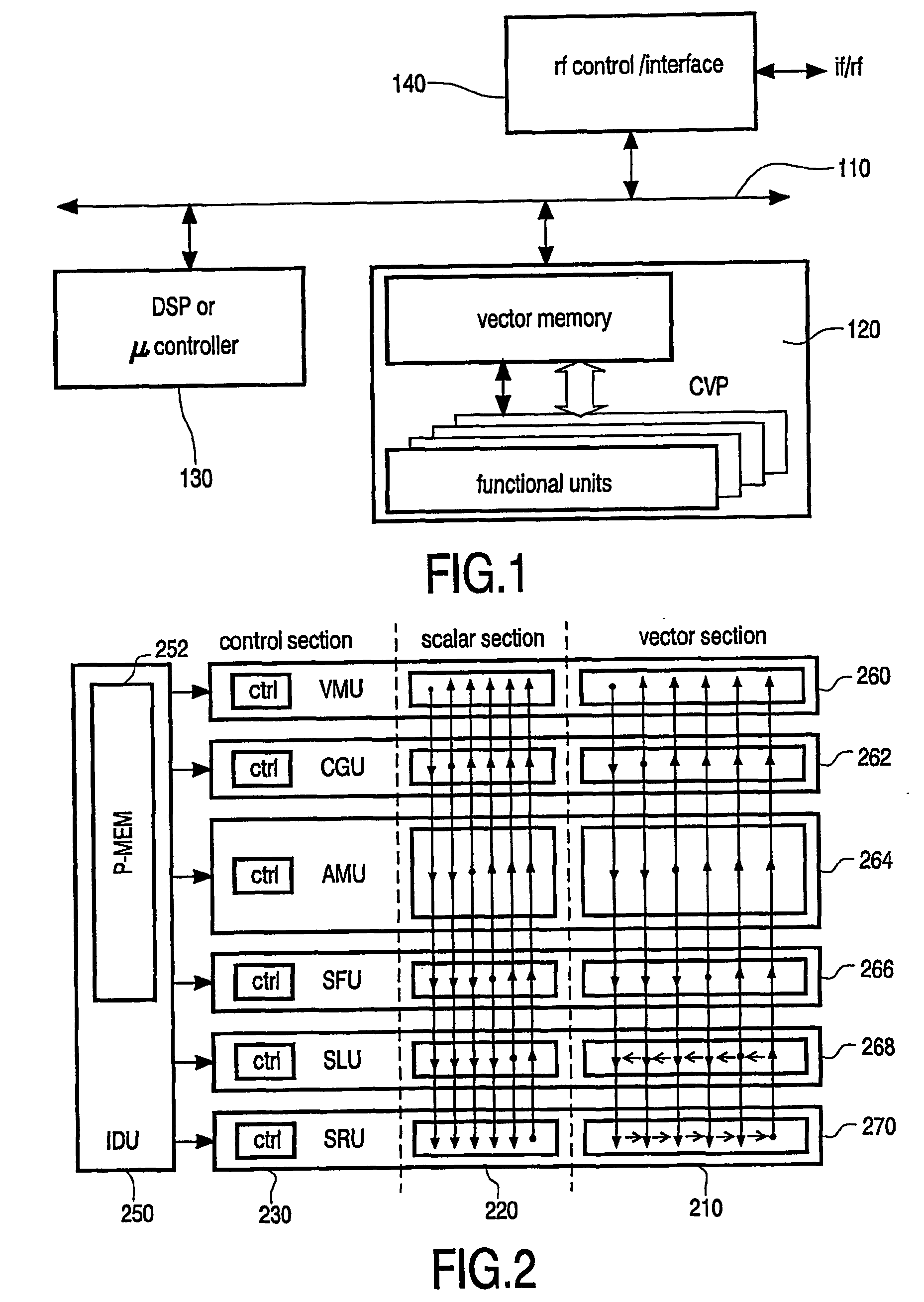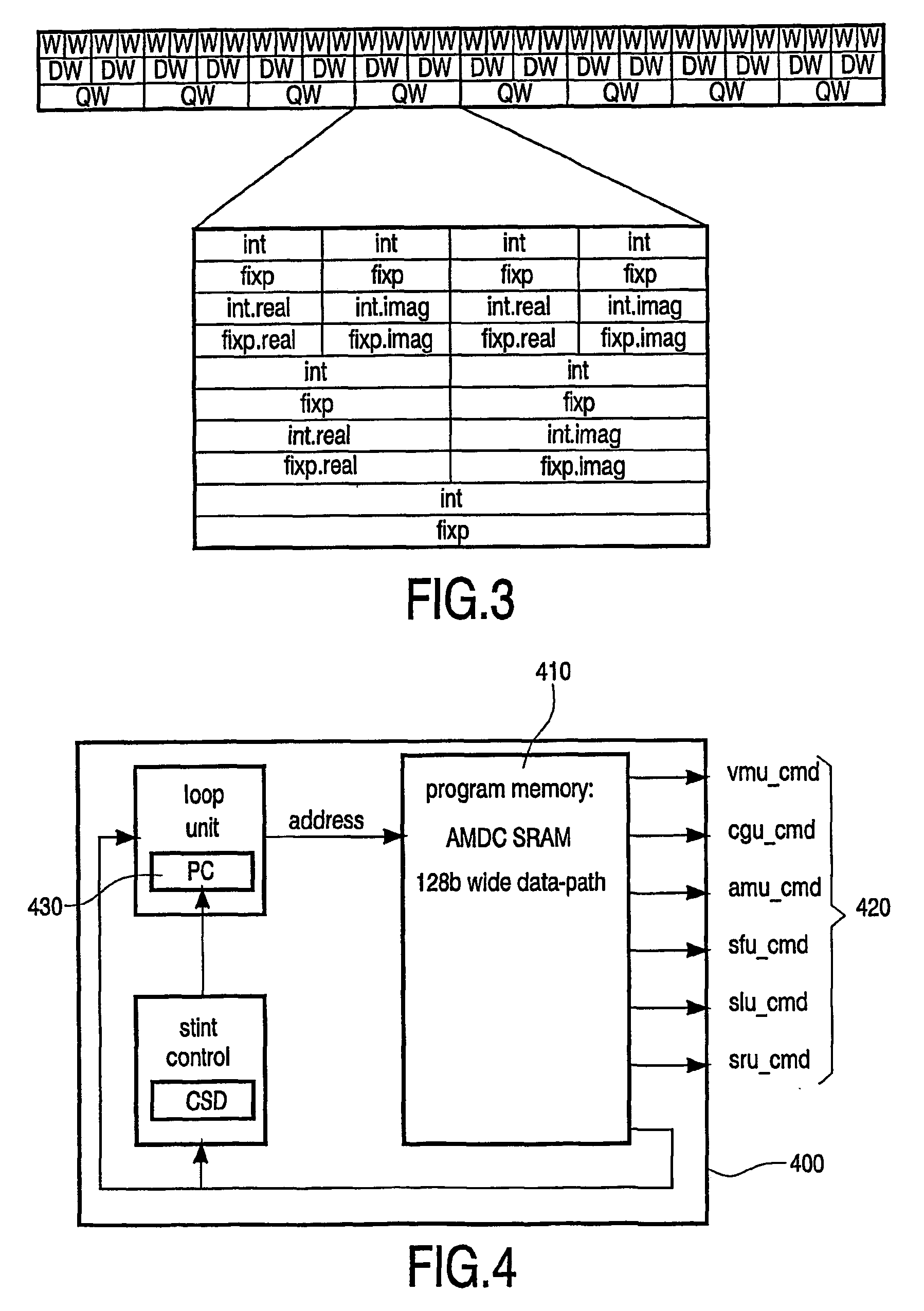Scalar/vector processor
a vector processor and processor technology, applied in the field of scalar/vector processors, can solve the problem of no close co-operation between the functional unit of the scalar processor and the functional unit of the vector processor, and achieve the effects of simplifying the programming of the processor, increasing the performance of the vector and scalar parts, and increasing the configurability
- Summary
- Abstract
- Description
- Claims
- Application Information
AI Technical Summary
Benefits of technology
Problems solved by technology
Method used
Image
Examples
Embodiment Construction
[0030]FIG. 1 shows a preferred configuration in which the scalar / vector processor according to the invention may be used. In this configuration, three main components are connected via a bus 110. The bus 110 connecting these three components may be any suitable bus, for example an AMBA High-speed Bus (AHB). The main components are: [0031] the programmable scalar / vector processor 120 according to the invention, comprising functional units and a local data memory (referred to as vector memory in FIG. 1), [0032] a micro-controller or DSP subsystem 130, including limited on-chip program and data memory, [0033] an interface block 140.
[0034] The scalar / vector processor 120 is mainly used for regular, “heavy / duty” processing, in particular the processing of inner-loops. The scalar / vector processor includes vector processing functionality. As such, it provides large-scale parallelism for the vectorizable part of the code to be executed. The vast majority of all signal processing will be ex...
PUM
 Login to View More
Login to View More Abstract
Description
Claims
Application Information
 Login to View More
Login to View More - R&D
- Intellectual Property
- Life Sciences
- Materials
- Tech Scout
- Unparalleled Data Quality
- Higher Quality Content
- 60% Fewer Hallucinations
Browse by: Latest US Patents, China's latest patents, Technical Efficacy Thesaurus, Application Domain, Technology Topic, Popular Technical Reports.
© 2025 PatSnap. All rights reserved.Legal|Privacy policy|Modern Slavery Act Transparency Statement|Sitemap|About US| Contact US: help@patsnap.com



